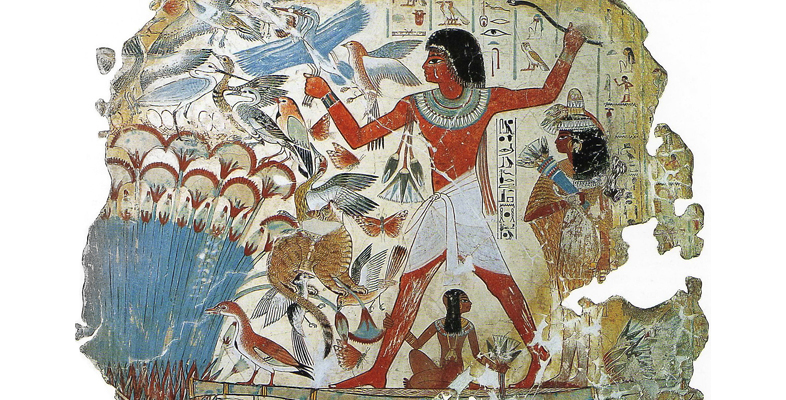3.2 Death rituals
A poor person in ancient Egypt would have been buried, with at most a modest ceremony involving immediate family and friends, in a relatively shallow grave in the sandy soil. A member of the elite, however, such as Nebamun the Grain-accountant in the Temple of Amun would have undergone the most extraordinarily elaborate and long drawn out rituals all aimed at securing a happy and serene afterlife in eternity.
The focus of these rituals, needless to say, was the process of mummification. The complex, multidimensional Egyptian conception of individual identity – made up, in addition to one’s body, of ‘ka’ and ‘ba’ (akin to, though not the same as, our notions of ‘immortal soul’ and ‘individual personality’) but also the name and the shadow – required a well-preserved body for the other aspects to attach themselves to in the afterlife to produce the ‘akh’, the state of transfigured being in a condition of permanent beatitude.
So after death, the body and internal organs (though puzzlingly to us, not the brain, whose function was not appreciated) were all preserved through an elaborate embalming process taking several weeks. The mummy was then placed in a coffin, itself covered with many images and texts aimed at helping the person on their journey through the underworld towards rebirth and eternal life in the realm of Osiris where, in effect, time stopped. Ceremonies and spells known to us as the Book of the Dead accompanied this process, although their other name, the Spells of Going Forth by Day, better captures the sense of rebirth involved. In the generation after Nebamun, illustrations from these spells were often painted on the tomb-chapel walls as well (Figure 9).

It was this complex thing, part physical object, part sacred text, and accompanied by an equally complex complement of grave goods ranging from food to furniture, that was eventually placed in the tomb. Below the decorated tomb-chapel that had been painstakingly prepared during the owner's lifetime, the tomb-owner would live on in his ‘house of eternity’.
